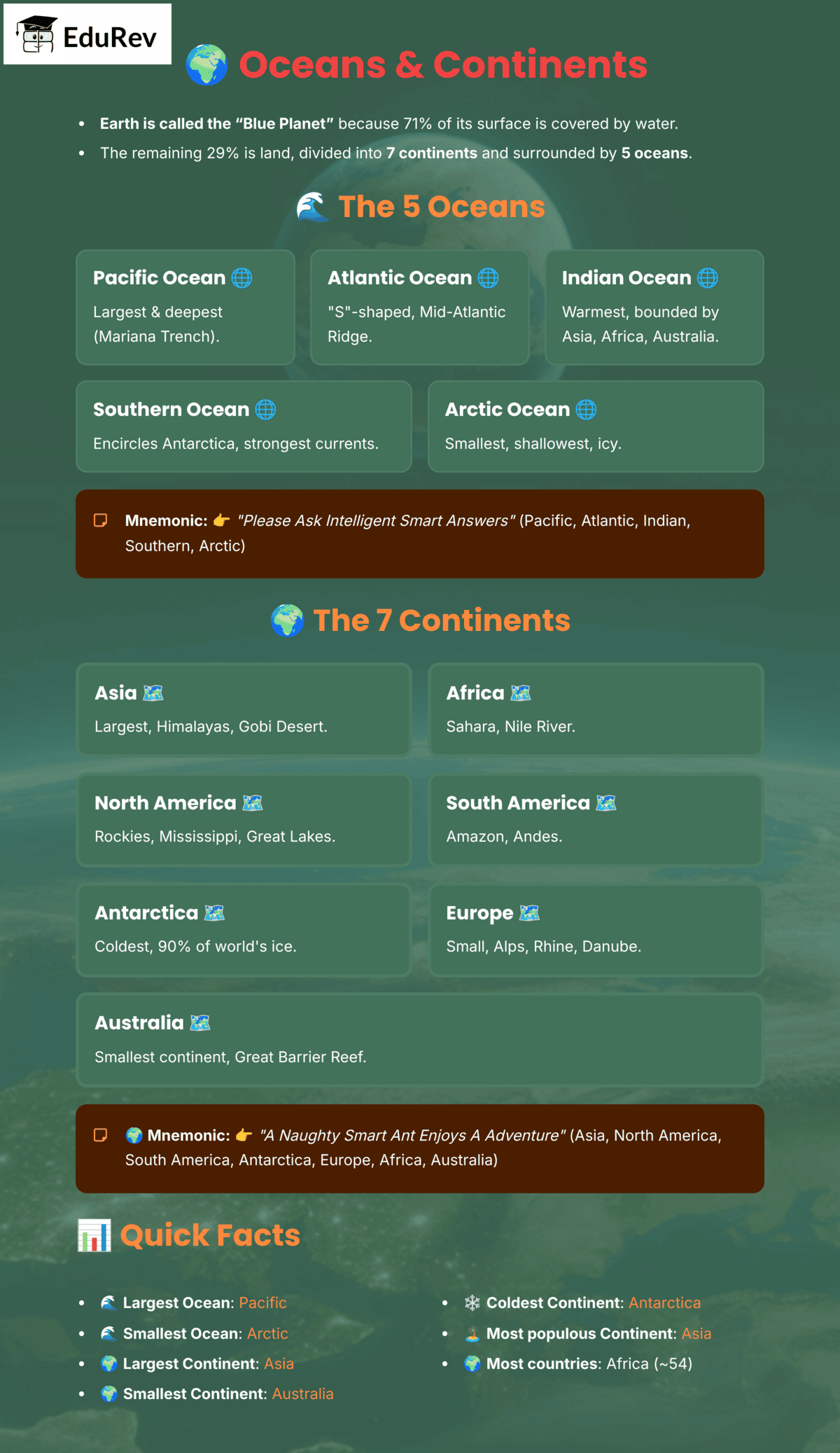SSC CGL Exam > SSC CGL Notes > General Awareness for SSC CGL > Infographic: Oceans and Continents
Infographic: Oceans and Continents | General Awareness for SSC CGL PDF Download

The document Infographic: Oceans and Continents | General Awareness for SSC CGL is a part of the SSC CGL Course General Awareness for SSC CGL.
All you need of SSC CGL at this link: SSC CGL
|
477 videos|1443 docs|395 tests
|
FAQs on Infographic: Oceans and Continents - General Awareness for SSC CGL
| 1. What are the major oceans of the world and their significance? |  |
Ans. The major oceans of the world include the Pacific Ocean, Atlantic Ocean, Indian Ocean, Southern Ocean, and Arctic Ocean. The Pacific Ocean is the largest and deepest, covering more area than all the continents combined. The Atlantic Ocean is known for its role in trade and transportation. The Indian Ocean is significant for its biodiversity and trade routes. The Southern Ocean surrounds Antarctica and plays a crucial role in regulating the Earth's climate. The Arctic Ocean is the smallest and shallowest, important for its unique ecosystem.
| 2. How many continents are there, and what are their names? |  |
Ans. There are seven continents: Asia, Africa, North America, South America, Antarctica, Europe, and Australia. Each continent has unique geographical features, cultures, and ecosystems. Asia is the largest and most populous, while Antarctica is the least populated and covered in ice. These continents are essential for understanding global geography and human activities.
| 3. What is the importance of oceans in regulating the Earth's climate? |  |
Ans. Oceans play a vital role in regulating the Earth's climate by absorbing and storing solar energy, distributing heat through currents, and influencing weather patterns. They help moderate temperatures, support marine life, and act as carbon sinks, absorbing carbon dioxide from the atmosphere. The health of oceans is crucial for maintaining a balanced climate and sustaining life on Earth.
| 4. How do oceans and continents interact with each other? |  |
Ans. Oceans and continents interact through various processes, including erosion, sediment deposition, and the water cycle. Rivers carry sediments from land to oceans, impacting marine ecosystems. Additionally, ocean currents can influence weather patterns on continents. Human activities, such as pollution and development, also affect these interactions, highlighting the need for sustainable practices to protect both oceans and continents.
| 5. What are the major features of the ocean floor? |  |
Ans. The major features of the ocean floor include continental shelves, continental slopes, abyssal plains, mid-ocean ridges, and ocean trenches. Continental shelves are shallow areas near coastlines, while continental slopes descend steeply to deeper waters. Abyssal plains are flat, deep-sea regions, mid-ocean ridges are underwater mountain ranges, and ocean trenches are the deepest parts of the ocean. These features are crucial for understanding marine geology and biodiversity.
Related Searches













